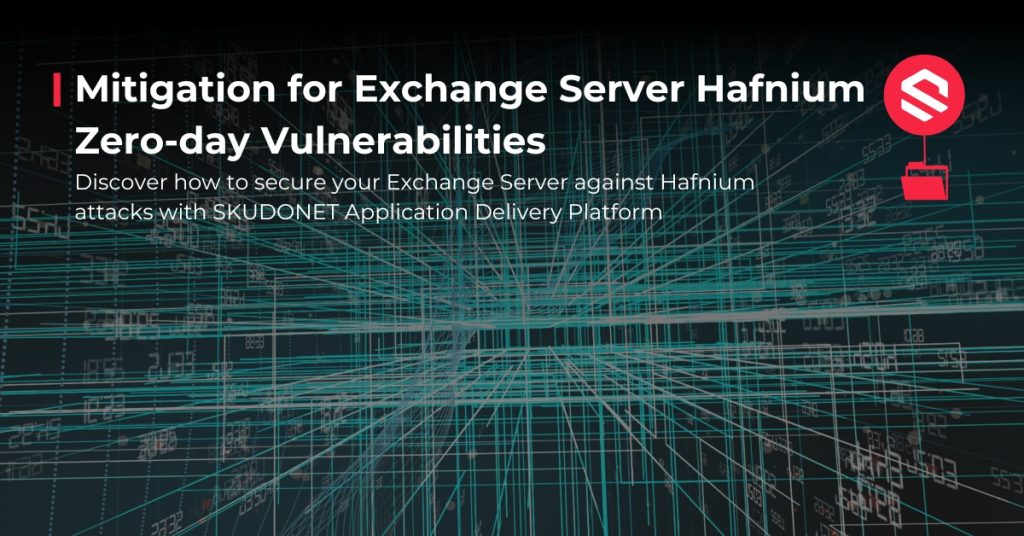Just months after the notorious SolarWinds supply chain attack, Microsoft faced another major cybersecurity crisis—this time, targeting on-premises Exchange Servers. A threat actor identified as Hafnium exploited a group of zero-day vulnerabilities in Microsoft Exchange Server 2013, 2016, and 2019, gaining unauthorized access to email accounts and enabling the deployment of malware for persistent access.
These vulnerabilities—documented under CVE-2021-26855, CVE-2021-26857, CVE-2021-26858, and CVE-2021-27065—affected organizations worldwide. Even though Microsoft issued emergency patches, the widespread exposure showed how many infrastructures lacked the visibility and safeguards needed to respond swiftly to these kinds of threats.
What made these vulnerabilities so dangerous?
The most critical factor was the combination of privilege escalation and remote code execution without requiring authentication. Attackers could exploit Server-Side Request Forgery (SSRF) vulnerabilities to impersonate users, access mailboxes, or install backdoors—often without triggering alerts in traditional security systems.
This wasn’t just a flaw in Microsoft’s code—it was a wake-up call for thousands of organizations still relying on on-premise email servers without adequate traffic control, visibility, or security automation.
Microsoft’s official mitigation measures
For those unable to patch immediately, Microsoft released a set of mitigation steps aimed at reducing the attack surface. These included:
- Restricting access to Exchange Servers via VPN for trusted users only
- Filtering malicious cookies via a Web Application Firewall (WAF) to block headers like X-AnonResource-Backend and malformed X-BEResource used in SSRF payloads
- Disabling services such as Unified Messaging (UM), Exchange Control Panel (ECP VDir), and Offline Address Book (OAB VDir) when not in use
These mitigations, while helpful, also revealed a broader challenge: not all organizations had tools in place to apply such configurations quickly or monitor their effects properly.
Microsoft Security Blog on Hafnium
Technical guidance and mitigation steps
Beyond patching: why infrastructure visibility matters
While patching remains the first line of defense, it’s not always enough—especially if attackers have already gained a foothold. The ability to inspect traffic patterns, identify anomalous behavior, and filter malicious connections in real time becomes essential to detect and contain threats before they escalate.
For example, blocking malformed headers or suspicious IPs requires more than a firewall—it calls for intelligent traffic inspection at the application layer, with the ability to correlate patterns across time, source, and protocol.
This is where advanced Application Delivery Controllers (ADCs) with built-in security capabilities prove their value.
How SKUDONET supports Exchange Server protection
SKUDONET is a next-generation Application Delivery Controller (ADC) developed in Europe, designed to handle traffic distribution and application-layer security in a unified platform.
Unlike traditional setups where load balancing and security are handled by separate tools, SKUDONET integrates both — including a WAF (Web Application Firewall), TLS/SSL inspection, and an advanced IPDS system (Intrusion Prevention and Detection), all built-in from day one without requiring additional modules or licenses.
This means that organizations running Exchange Server can:
- Apply WAF rules like Microsoft’s “Backend Cookie Mitigation” directly from the interface, without needing a separate appliance
- Inspect encrypted traffic (HTTPS) in real time, a critical step to detect modern threats hidden in TLS sessions
- Monitor and filter connections using over 260 real-time blacklists for IP reputation, helping to block known malicious sources
- Audit logs and manage custom traffic rules with ease, even for teams without deep security expertise
- Deploy high availability and load balancing for Exchange CAS arrays, DAGs, and OWA with simplified configuration
👉 See our full guide for Exchange Server high availability
In scenarios like the Hafnium campaign, these capabilities don’t just prevent attacks—they reduce response time, help contain the damage, and give your infrastructure the transparency it needs to adapt.
The Hafnium vulnerabilities were a stark reminder that security gaps don’t always come from ignorance—they often come from complexity, fragmentation, and lack of visibility. And in critical systems like Exchange Server, those weaknesses can be exploited quickly and silently.
Mitigating these risks is not just about emergency patching. It’s about securing the full path of your data, from user access to encrypted traffic, and having tools that let you act early and decisively.
With SKUDONET, securing your Exchange environment doesn’t require layered tools, complex deployments, or surprise costs — just the right combination of performance and security in a single, scalable solution.


